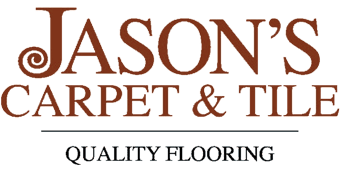Blog > Breaking down the differences between solid and engineered hardwood flooring
Breaking down the differences between solid and engineered hardwood flooring
Wednesday, February 28, 2024

Solid hardwood flooring and engineered hardwood flooring are two popular options for homeowners, each with its own set of characteristics. But as a consumer what are the differences? Here's a breakdown to see just that:
Construction:
- Solid Hardwood: Made from a single piece of solid wood. Typically, available in planks with a uniform thickness.
- Engineered Hardwood: Composed of multiple layers. The top layer is a thin veneer of real hardwood, and beneath it, there are layers of plywood or fiberboard. The layers are bonded together in a cross-grain construction.
Installation:
- Solid Hardwood: Installed using the nail-down method. It is usually nailed or stapled to a wooden subfloor.
- Engineered Hardwood: More versatile installation methods, including floating (glue or click-lock) and glue-down. It can be installed on various surfaces, including concrete.
Moisture Resistance:
- Solid Hardwood: Susceptible to moisture and humidity, making it less suitable for areas prone to changes in moisture levels (e.g., bathrooms with showers).
- Engineered Hardwood: Generally, more stable in varying humidity conditions due to its layered construction. It can be a better choice for areas with fluctuating moisture levels.
Durability:
- Solid Hardwood: Can be sanded and refinished multiple times, allowing for a longer lifespan. However, it is more susceptible to scratches and dents.
- Engineered Hardwood: The top layer of real hardwood is thinner, limiting the number of times it can be refinished. However, its stability can be an advantage in certain environments.
Cost:
- Solid Hardwood: Often more expensive, both in terms of material and installation costs.
- Engineered Hardwood: Generally, more cost-effective, making it a more budget-friendly option for those looking for the appearance of hardwood without the higher price tag.
Appearance:
- Solid Hardwood: Offers the traditional, authentic look of natural wood. Available in various species, grades, and finishes.
- Engineered Hardwood: Also provides a real wood surface but may have a slightly different feel underfoot. The top veneer layer can be chosen for its appearance.
Environment:
- Solid Hardwood: Generally considered a renewable resource if sourced responsibly, but the environmental impact can vary where you are located.
- Engineered Hardwood: Can be considered more environmentally friendly, as it often uses less of the desired hardwood species and may incorporate faster- growing woods in the core layers.
Ultimately, the choice between solid and engineered hardwood depends on factors such as budget, location, desired appearance, and environmental considerations. Both options have their advantages and can be suitable for different situations. For additional questions and information, visit https://www.jasonscarpetandtile.com.
